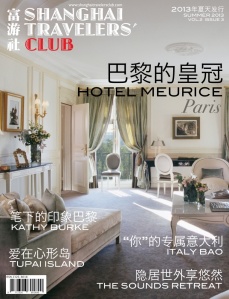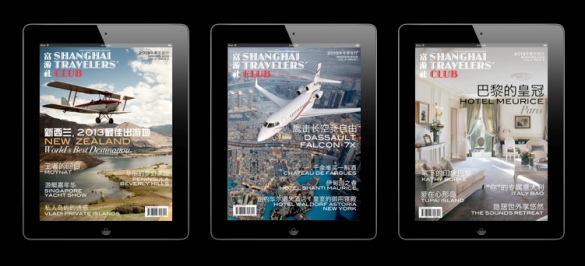GERVOIS magazine has been selected to be the new preferred global travel publication of the prestigious Shanghai Travelers’ Club, and is now distributed to its members.
GERVOIS magazine is proud to follow the steps of the iconic STC magazine, the Club’s own iconic travel magazine that has been published from 2008 to 2017.
Founded in Shanghai in 2008, the Shanghai Travelers’ Club is China’s most exclusive international luxury travel club for discerning Chinese global entrepreneurs and executives seeking experiential & authentic travel discoveries.
Its 12,000+ members have an average annual income of US$580K, travel overseas on average four times per year, and spend on average US$63,500 per year during their travels. 23% of them have investe d in real estate internationally. Excluding their real estate investment abroad, they collectively spend & invest more than US$700M per year in travel related expenses.
d in real estate internationally. Excluding their real estate investment abroad, they collectively spend & invest more than US$700M per year in travel related expenses.
As the vast majority of Chinese high net worth individuals who travel frequently overseas is now speaking Engligh fluently, the Shanghai Travelers’ Club members felt the need to partner with an English language luxury travel magazine.
The club has selected GERVOIS magazine for its acclaimed editorial content, featuring exceptional hotels, men’s fashion styling ideas, art investment, real estate investment, and their iconic travel photoshoots made by the New York based famous travel photographer EFDLT studio, Director of Photography.
Starting with the Spring 2018 issue, released on March 16th, GERVOIS magazine will proudly partner for the years to come with the Shanghai Travelers’ Club and invite its Chinese members to travel and discover the United States and the World in style.
More informations about GERVOIS magazine:
http://www.gervoisrating.com/shanghai-travelers-club/
More informations about EFDLT studio, Director of Photography:
http://www.efdltstudio.com/
https://www.instagram.com/efdltstudio/
 The Gervois rating system is a hotel rating system created in 2016 by Pierre Gervois, a successful NYC based travel media entrepreneur and frequent traveler in the United States. Founder of the STC magazine, the leading luxury travel magazine about the U.S. in Chinese Mandarin, he has an extensive experience about reviewing hotels for international and discerning travelers.
The Gervois rating system is a hotel rating system created in 2016 by Pierre Gervois, a successful NYC based travel media entrepreneur and frequent traveler in the United States. Founder of the STC magazine, the leading luxury travel magazine about the U.S. in Chinese Mandarin, he has an extensive experience about reviewing hotels for international and discerning travelers.
 China has recorded the most number of closures of luxury stores between July 2016 and July 2017, the latest report by the investment research and management company Bernstein shows. The report, titled “Store Wars,” based its findings on Bernstein’s tracking of about 7,000 stores referring to 36 luxury brands including big names such as Burberry, Saint Laurent, and Céline.
China has recorded the most number of closures of luxury stores between July 2016 and July 2017, the latest report by the investment research and management company Bernstein shows. The report, titled “Store Wars,” based its findings on Bernstein’s tracking of about 7,000 stores referring to 36 luxury brands including big names such as Burberry, Saint Laurent, and Céline. 





